AWS Solutions Architect Associate Certification
Services Compute
ECS Demo Part 2
In this guide, we explore our multi-container application running on AWS ECS. The application comprises a Node.js/Express API and a MongoDB container, demonstrating a robust architecture for containerized deployments. Below is an in-depth overview, including configuration details, API endpoints, and AWS ECS setup.
Docker Compose Configuration
The following Docker Compose file defines two services: an API container and a MongoDB container. The API service uses our pre-built image "kodekloud/ecs-project2" and environment variables to connect to MongoDB, while the MongoDB service leverages persistent storage through volumes.
version: "3"
services:
api:
build: .
image: kodekloud/ecs-project2
environment:
- MONGO_USER=mongo
- MONGO_PASSWORD=password
- MONGO_IP=mongo
- MONGO_PORT=27017
ports:
- "3000:3000"
mongo:
image: mongo
environment:
- MONGO_INITDB_ROOT_USERNAME=mongo
- MONGO_INITDB_ROOT_PASSWORD=password
volumes:
- mongo-db:/data/db
volumes:
mongo-db:
The API container listens on port 3000 and connects to MongoDB using the provided environment variables. Meanwhile, the MongoDB container utilizes the official image and leverages volume mapping for durable data storage.
Note
Ensure that environment variables for MongoDB connectivity are properly set to avoid connection issues.
API Endpoints Overview
The API, built with Express and Mongoose, implements basic CRUD functionality for managing notes. The code snippets below illustrate each endpoint:
GET /notes
Retrieves all notes from the database.
const app = express();
app.use(cors());
app.use(express.json());
const mongoURL = `mongodb://${process.env.MONGO_USER}:${process.env.MONGO_PASSWORD}@${process.env.MONGO_IP}:${process.env.MONGO_PORT}/?authSource=admin`;
app.get("/notes", async (req, res) => {
try {
const notes = await Note.find();
res.status(200).json({ notes });
} catch (e) {
console.log(e);
res.status(400).json({ error: e.message });
}
});
GET /notes/:id
Retrieves a specific note by its ID.
app.get("/notes/:id", async (req, res) => {
try {
const note = await Note.findById(req.params.id);
if (!note) {
return res.status(404).json({ message: "Note not found" });
}
res.status(200).json({ note });
} catch (e) {
console.log(e);
res.status(400).json({ status: "fail" });
}
});
POST /notes
Creates a new note.
app.post("/notes", async (req, res) => {
console.log(req.body);
try {
const note = await Note.create(req.body);
return res.status(201).json({ note });
} catch (e) {
console.log(e);
return res.status(400).json({ status: "fail" });
}
});
PATCH /notes/:id
Updates an existing note.
app.patch("/notes/:id", async (req, res) => {
try {
const note = await Note.findByIdAndUpdate(req.params.id, req.body, {
new: true,
runValidators: true,
});
if (!note) {
return res.status(404).json({ message: "Note not found" });
}
res.status(200).json({ note });
} catch (e) {
console.log(e);
res.status(400).json({ status: "fail" });
}
});
DELETE /notes/:id
Deletes a note by its ID.
app.delete("/notes/:id", async (req, res) => {
try {
const note = await Note.findByIdAndDelete(req.params.id);
console.log(note);
if (!note) {
return res.status(404).json({ message: "Note not found" });
}
res.status(200).json({ status: "success" });
} catch (e) {
console.log(e);
res.status(400).json({ status: "fail" });
}
});
MongoDB Connection and Server Initialization
The snippet below uses Mongoose to connect to MongoDB. Upon successful connection, the server starts listening on port 3000.
mongoose
.connect(mongoURL, {
useNewUrlParser: true,
useUnifiedTopology: true,
})
.then(() => {
console.log("Successfully connected to DB");
app.listen(3000, () => console.log("Server is listening on PORT 3000"));
})
.catch((e) => {
console.log(e);
process.exit(1);
});
Console Confirmation:
user1 on user1 in ecs-project2 [!] is 📦 v1.0.0 via ⎇
AWS ECS Setup and Task Definition
Before deploying the application on ECS, proper configuration of AWS components is crucial. This section will guide you through setting up the security group, task definition, container configurations, and volumes.
ECS Task Definition and Security Group
Step 1: Create a Security Group for ECS
Navigate to EC2 → Security Groups. Create a new security group (e.g., "ECS-SG") and allow all traffic temporarily. Select the correct VPC matching your ECS cluster.

Step 2: Create an ECS Task Definition
Go to the ECS console and create a new task definition using Fargate. Assign the ECS task execution role accordingly. Name the task definition (e.g., "ECS-Project2").

Container Configuration
MongoDB Container
- Container Name: Mongo
- Image: Default Mongo image from Docker Hub
- Port Mapping: 27017
- Environment Variables:
- MONGO_INITDB_ROOT_USERNAME: mongo
- MONGO_INITDB_ROOT_PASSWORD: password
- Volume Mapping: Mount the volume (e.g., "mongo-db") at
/data/db.
environment: - MONGO_INITDB_ROOT_USERNAME=mongo - MONGO_INITDB_ROOT_PASSWORD=password volumes: - mongo-db:/data/db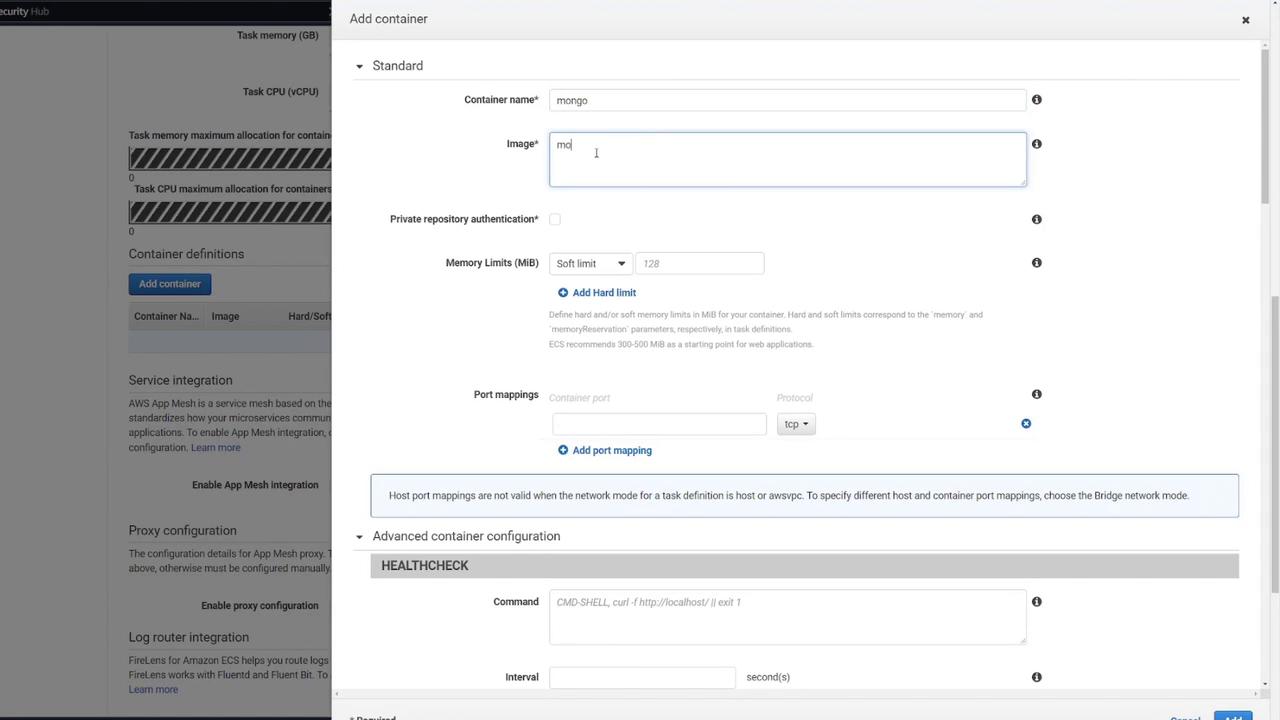
After setting the environment variables, proceed through the configuration.
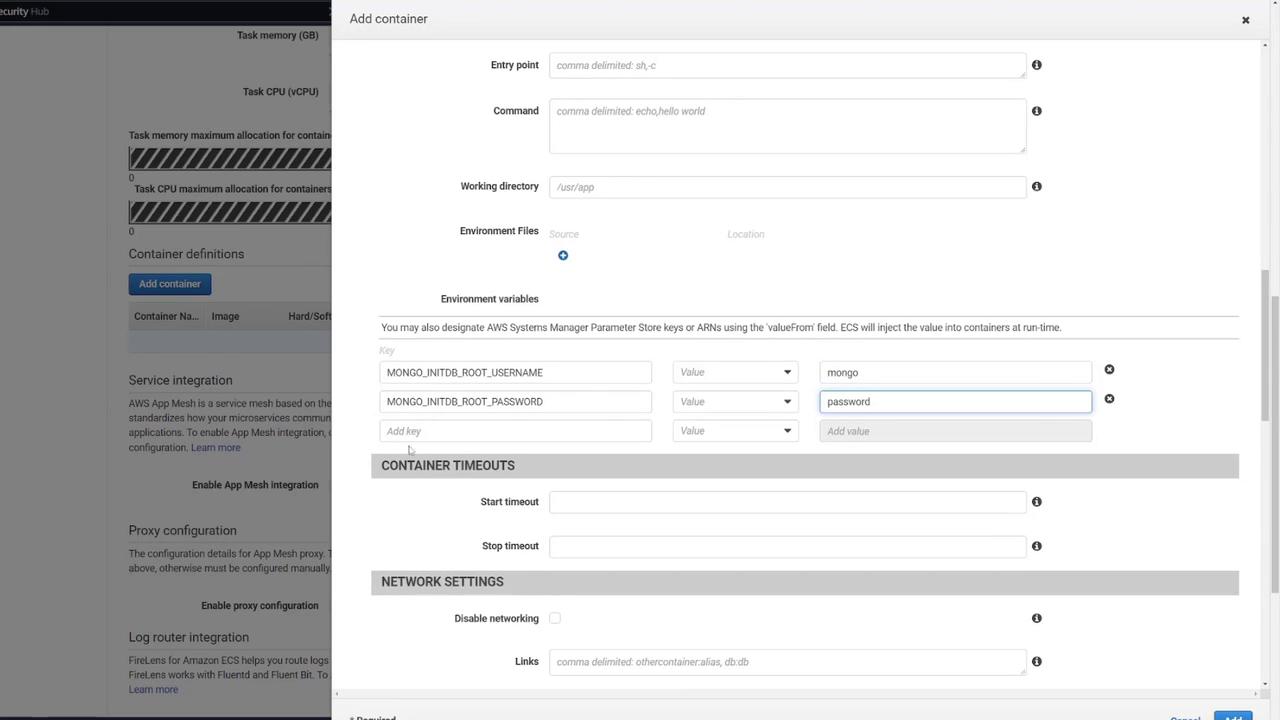
Express API Container
- Container Name: e.g., "web API"
- Image: kodekloud/ecs-project2
- Port Mapping: 3000
- Environment Variables:
- MONGO_USER: mongo
- MONGO_PASSWORD: password
- MONGO_IP: mongo (adjust to "localhost" if required in ECS)
- MONGO_PORT: 27017
version: "3" services: api: build: . image: kodekloud/ecs-project2 environment: - MONGO_USER=mongo - MONGO_PASSWORD=password - MONGO_IP=mongo - MONGO_PORT=27017 ports: - "3000:3000"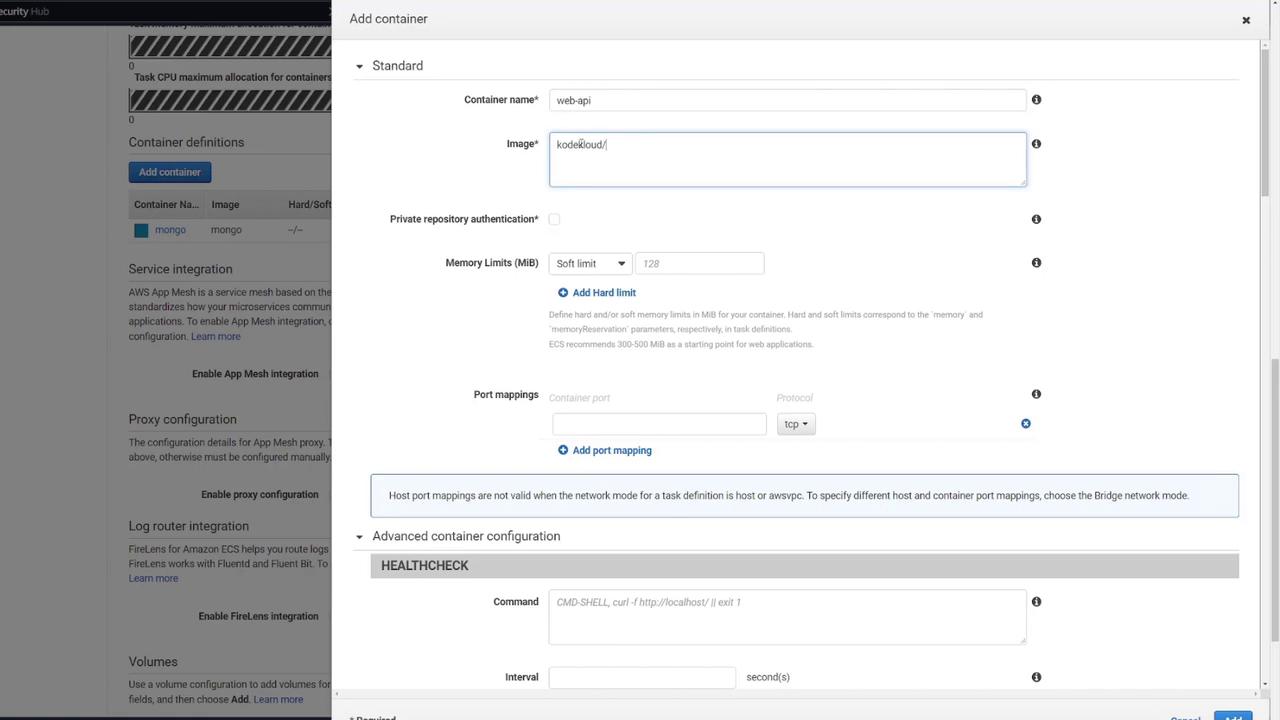
Volume Setup for MongoDB
To ensure persistent data storage, define a volume for MongoDB. In the task definition, add a volume (e.g., "MongoDB") and select AWS Elastic File System (EFS) as the volume type.
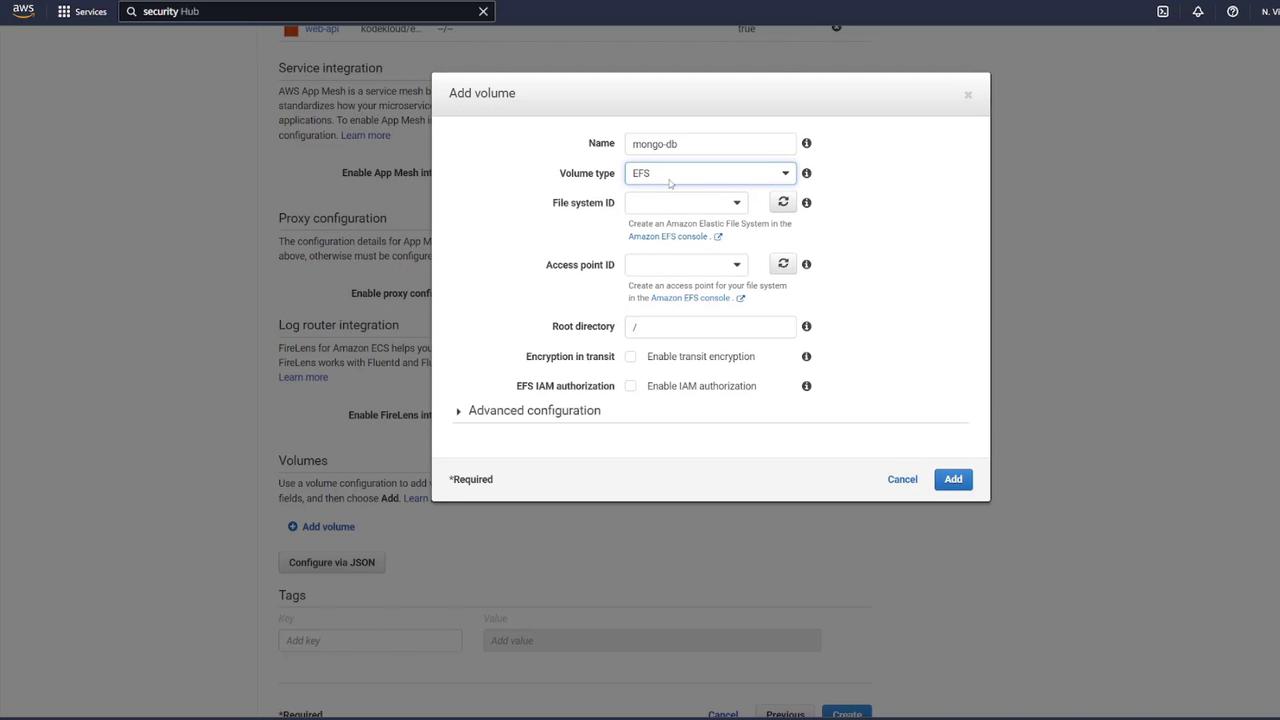
Create an EFS File System:
- Select "Create File System" via the provided link.
- Name the file system (e.g., MongoDB) and select the correct VPC.
- Customize the setup to include desired subnets.
- Update the EFS security group to allow only NFS access (port 2049) from your ECS security group.
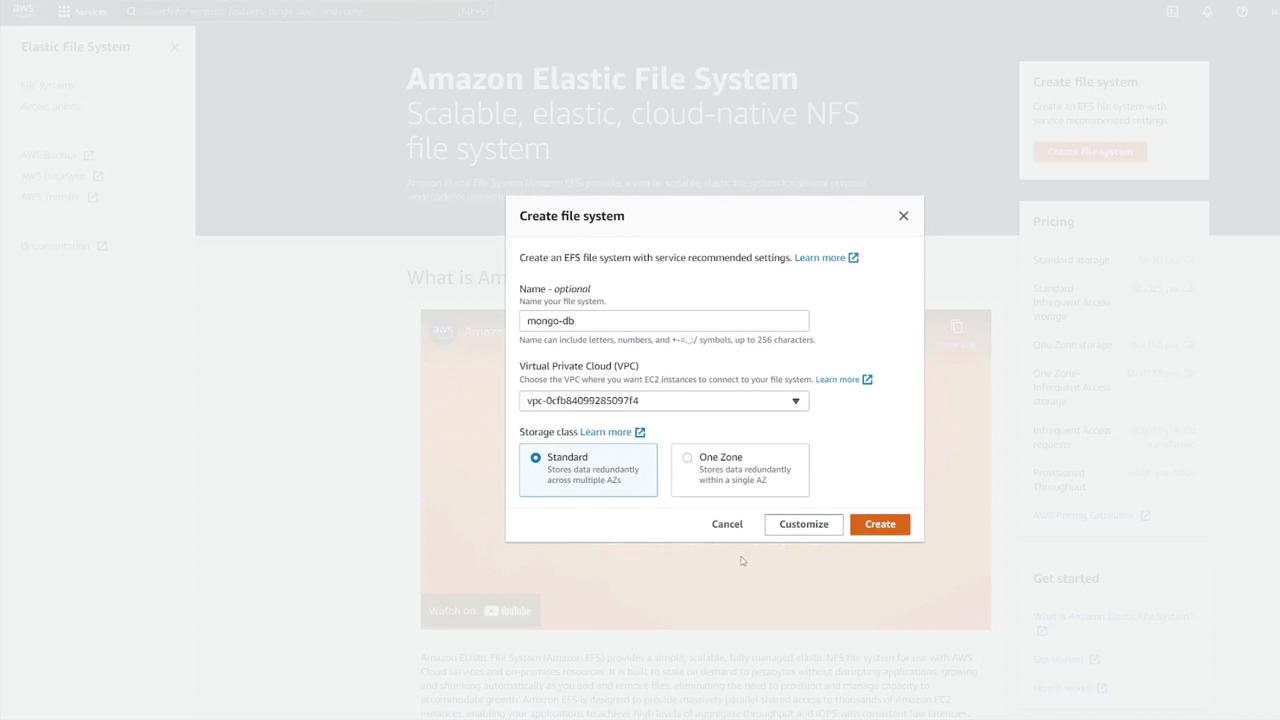
Finally, update the MongoDB container's task definition to assign the EFS volume mount at
/data/db.
Complete the task definition creation. You might see multiple revisions if this is not the first deployment.
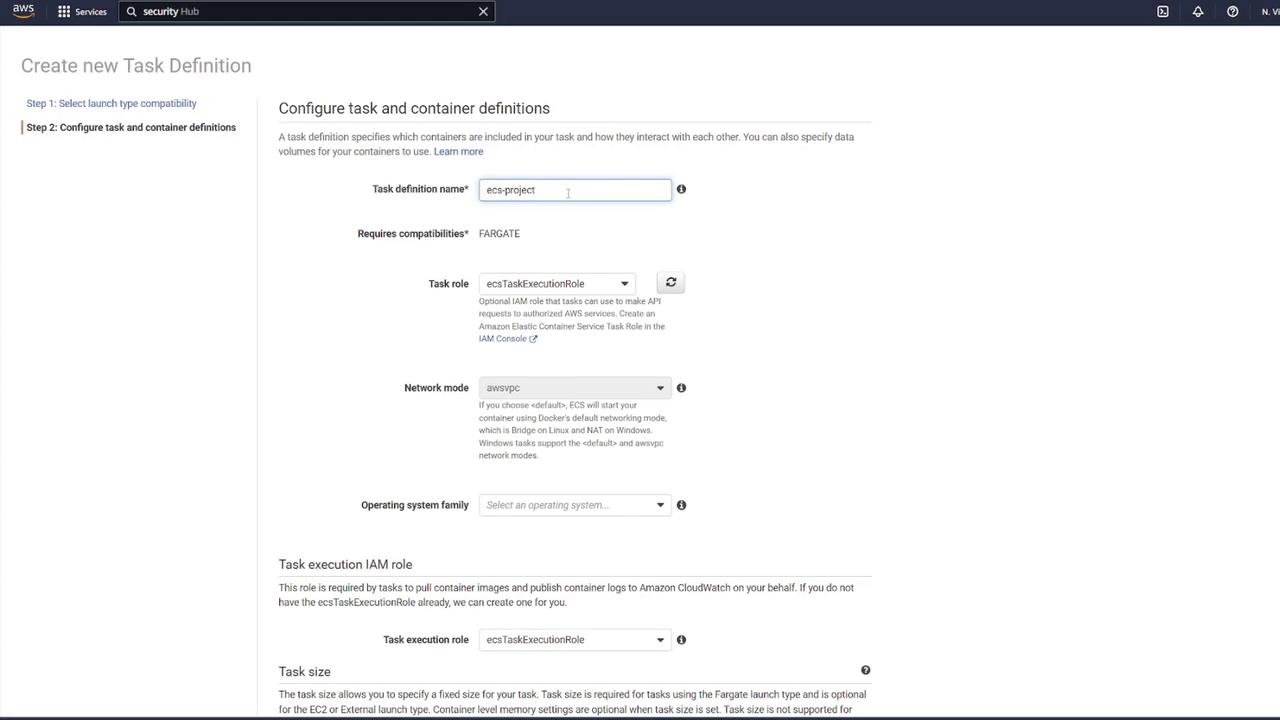
Creating the ECS Service
With the task definition ready, follow these steps to create an ECS service and attach a load balancer:
- Go to your ECS cluster and click "Create Service."
- Select Fargate as the launch type with the Linux platform.
- Choose the task definition (e.g., "ECS-Project2") and provide a service name (e.g., "notes app service").
- Set the desired number of tasks to 1, ensuring the correct VPC and subnets are selected.
- For the security group, select the one created earlier ("ECS-SG").

Add an Application Load Balancer (ALB):
- Open the load balancer setup in a new tab.
- Create a new ALB (e.g., "notes LB") using IPv4; ensure it is internet-facing and assigned to the correct VPC.
- Create a new security group for the load balancer (e.g., "LB-SG") that permits HTTP traffic on port 80.
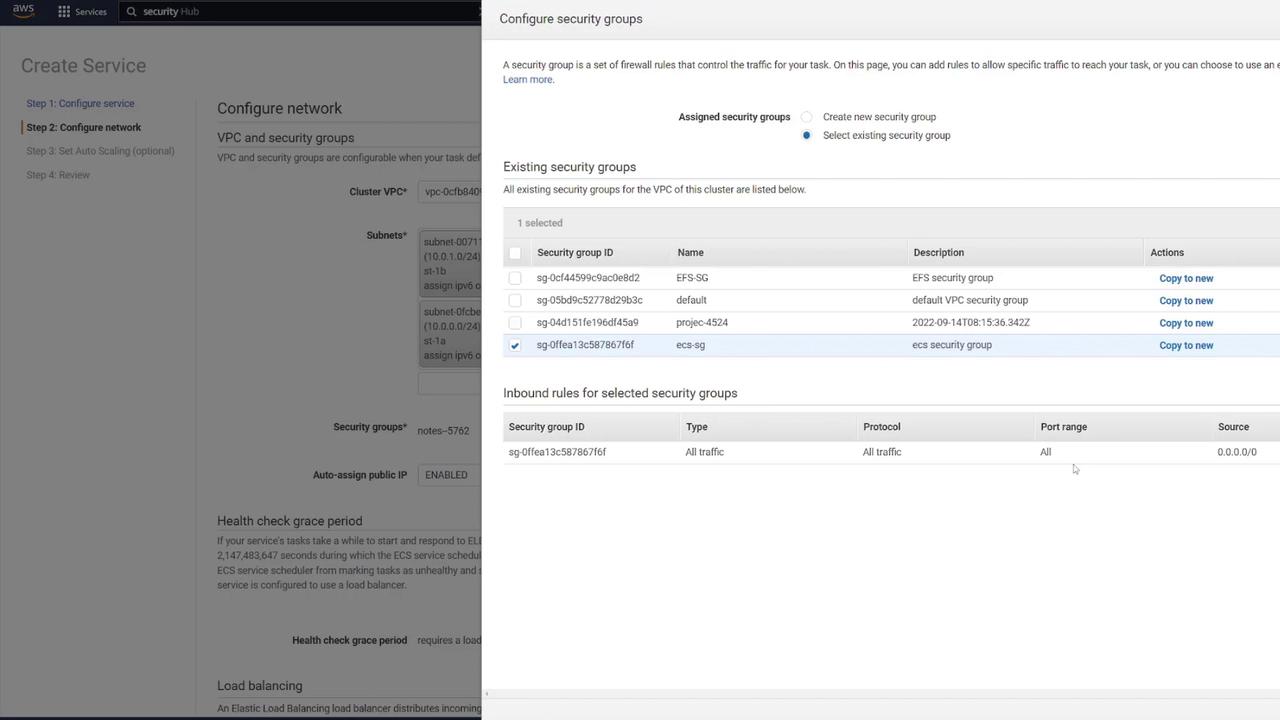
Configure Listener Rules and Target Group:
Define listener rules on port 80 to forward traffic to the API container:
Create a target group for the ALB:
- Choose "IP addresses" as the target type (suitable for ECS).
- Name the target group (e.g., "notes-target-group1").
- Set the health check path to
/notesand the port to 3000.
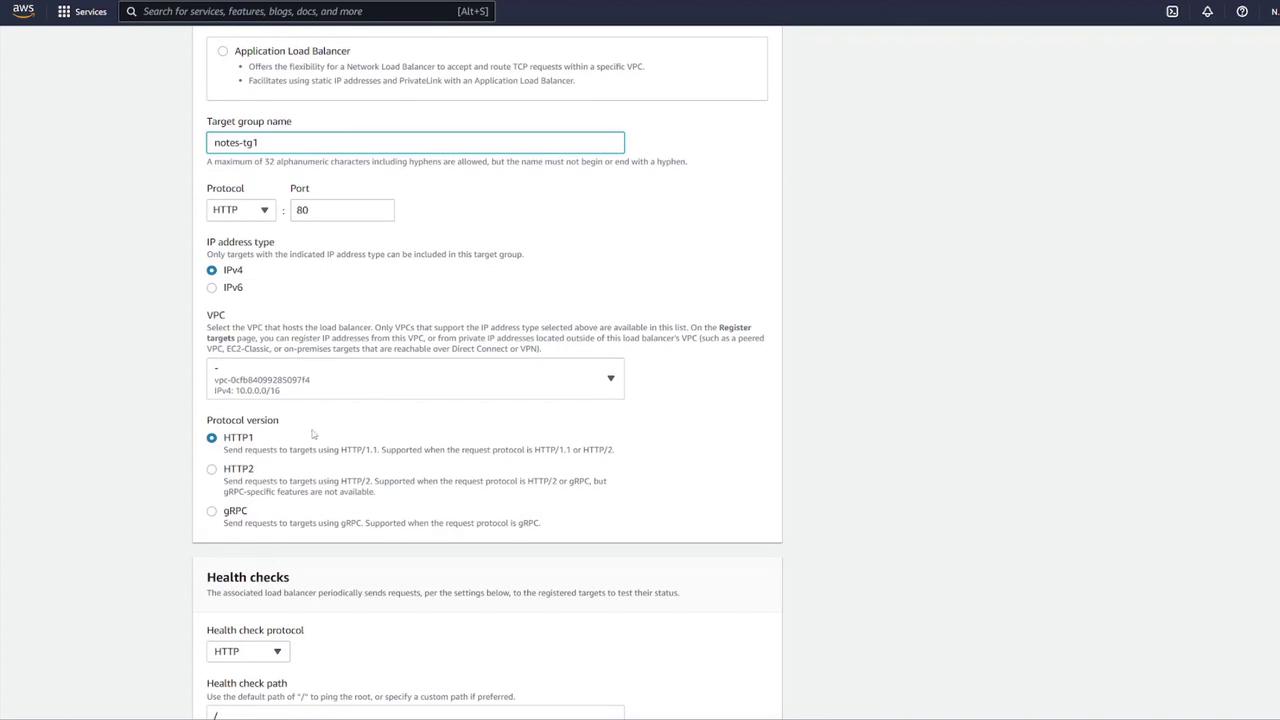
Assign the target group to your ALB.
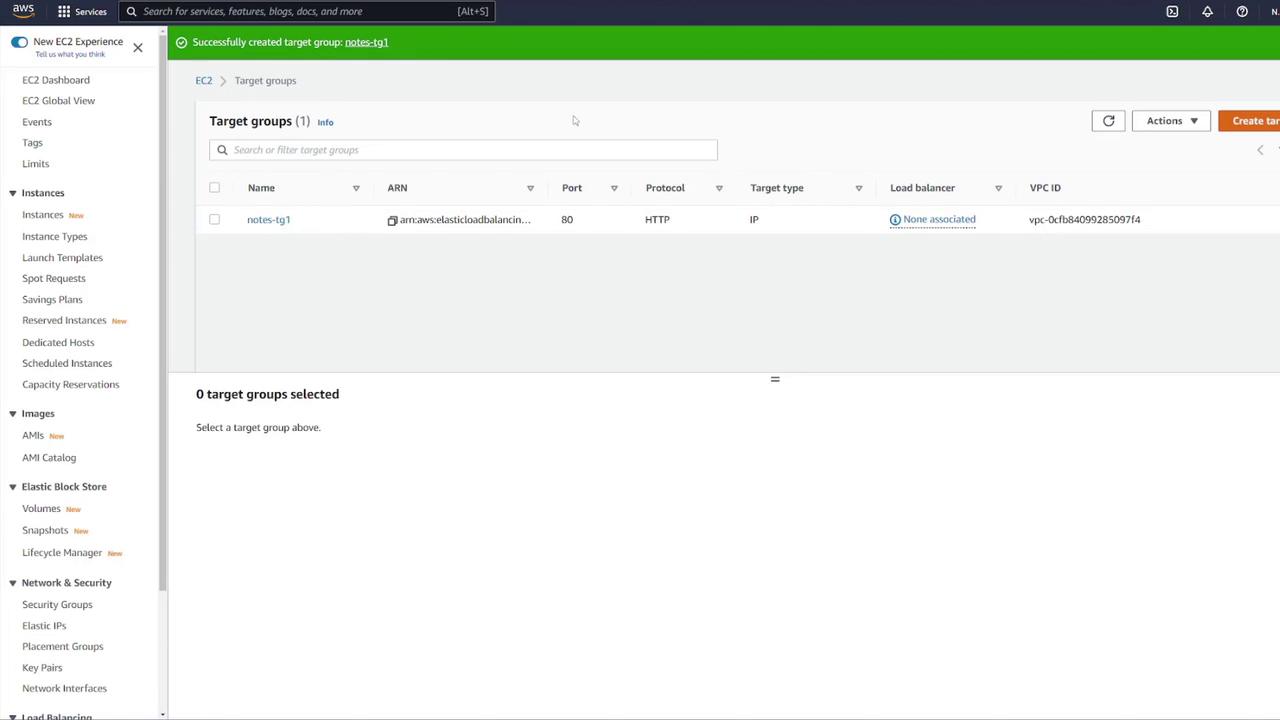
Return to the ECS service configuration. Specify that the load balancer forwards traffic on port 80 to port 3000 on the API container. Review and create the service.
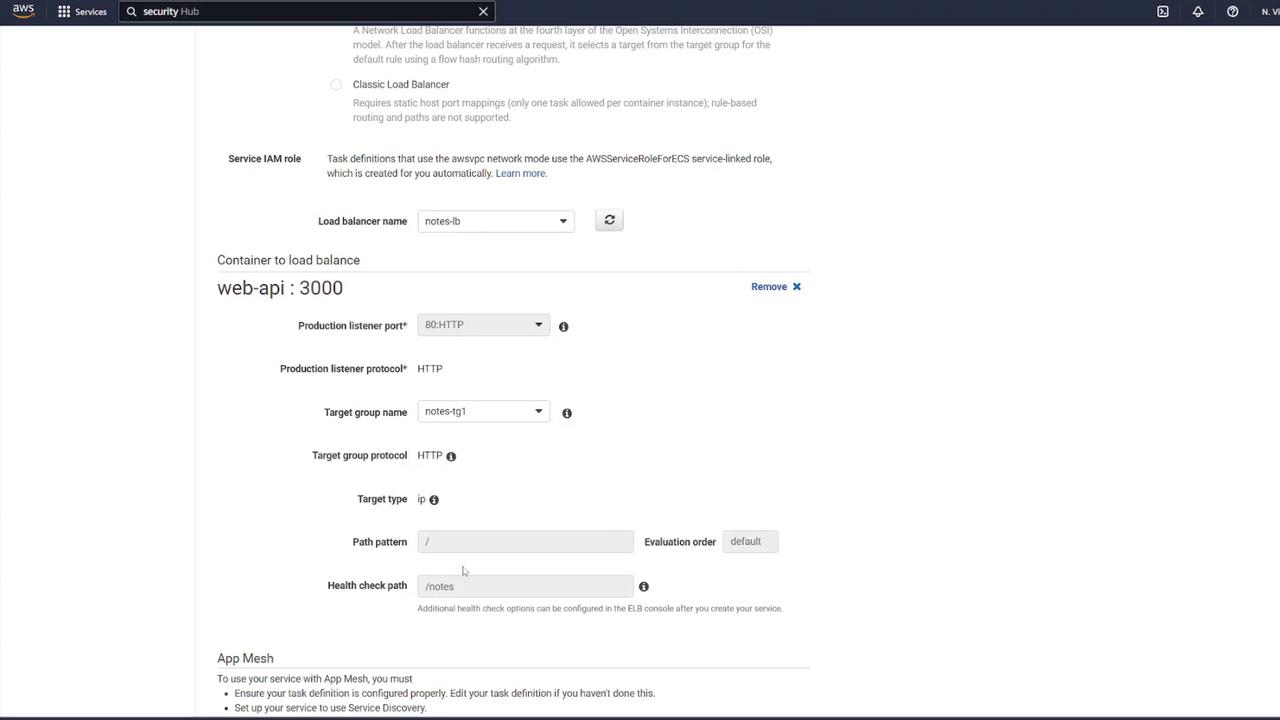
After the service is created, verify that the task transitions from provisioning to running. Both containers should reflect a running status.
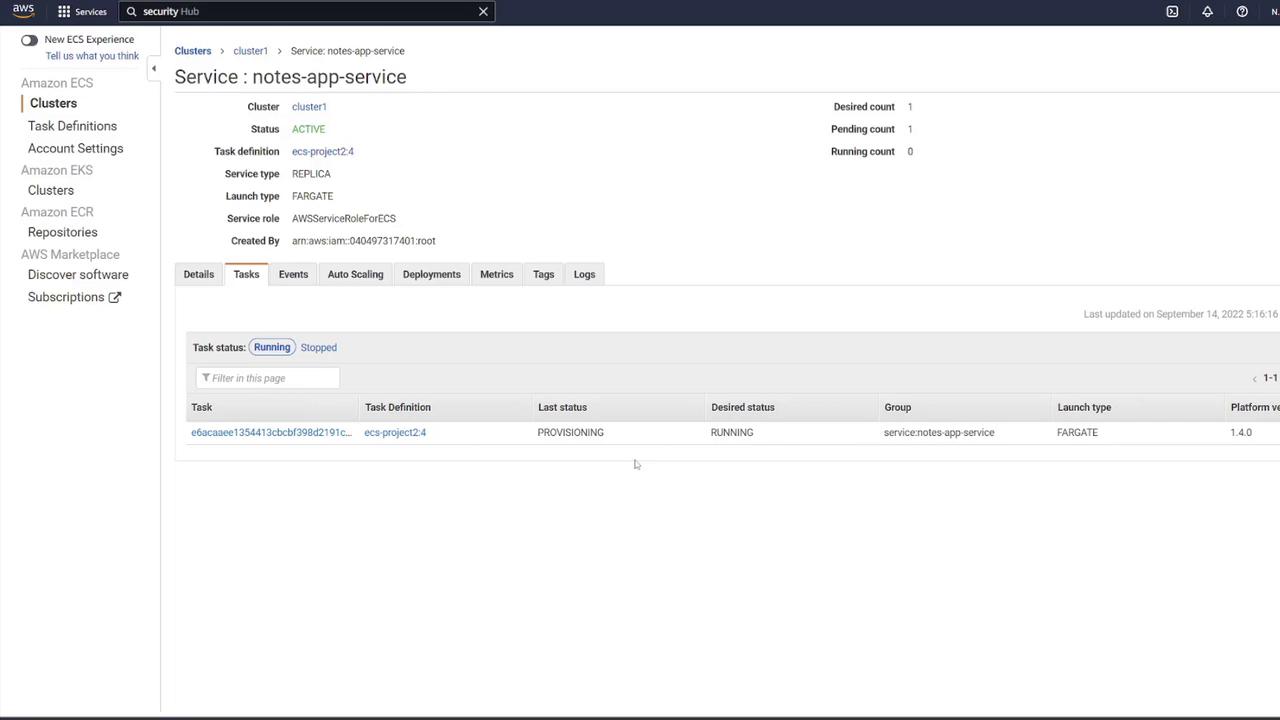
Selecting the task reveals detailed container statuses and networking information.
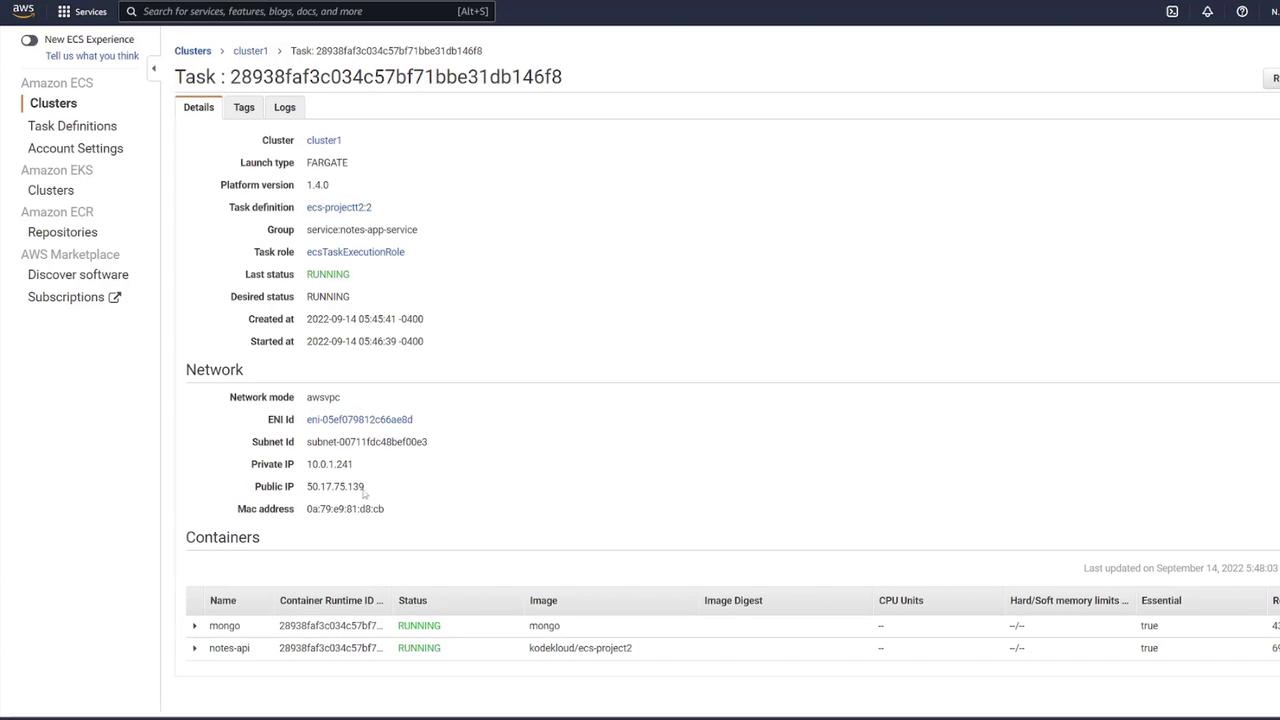
Testing the Deployment
Test the API by directly accessing the container's IP on port 3000 via tools like Postman:
- Send a GET request to
/notesto retrieve notes (an empty array if no notes are present). - For production, use the ALB DNS name; the ALB on port 80 forwards traffic to the API container on port 3000.
Example: Testing a POST Request
Send a JSON payload to create a note:
{
"title": "second note",
"body": "remember to do dishes!!!"
}
A successful POST creates a note. A subsequent GET request returns:
{
"notes": [
{
"_id": "63211a3c034fdd55dce212834",
"title": "second note",
"body": "remember to do dishes!!!",
"__v": 0
}
]
}
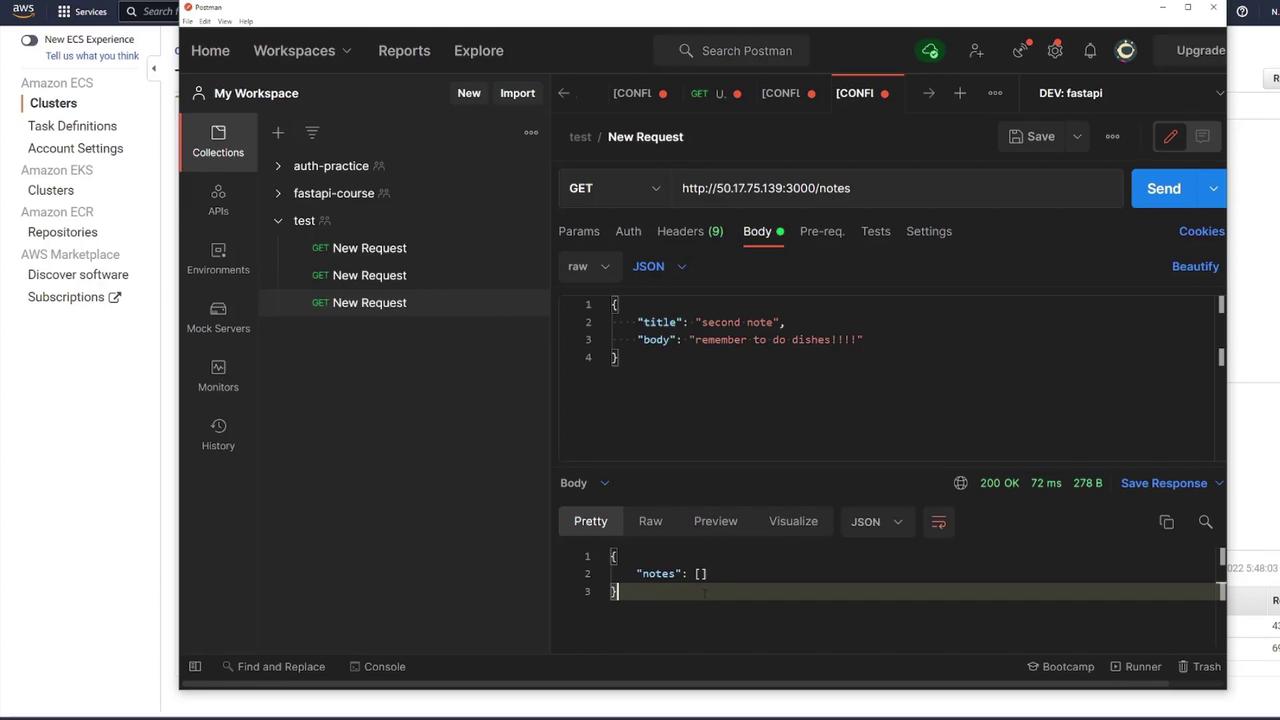
Securing the ECS Security Group
It is important to restrict access to your ECS resources. Currently, the ECS security group permits all incoming traffic, which is not secure.
Action Steps:
- Remove the rule that allows all traffic.
- Add a new rule to allow Custom TCP traffic on port 3000.
- Set the source to the load balancer security group (LB-SG) only.
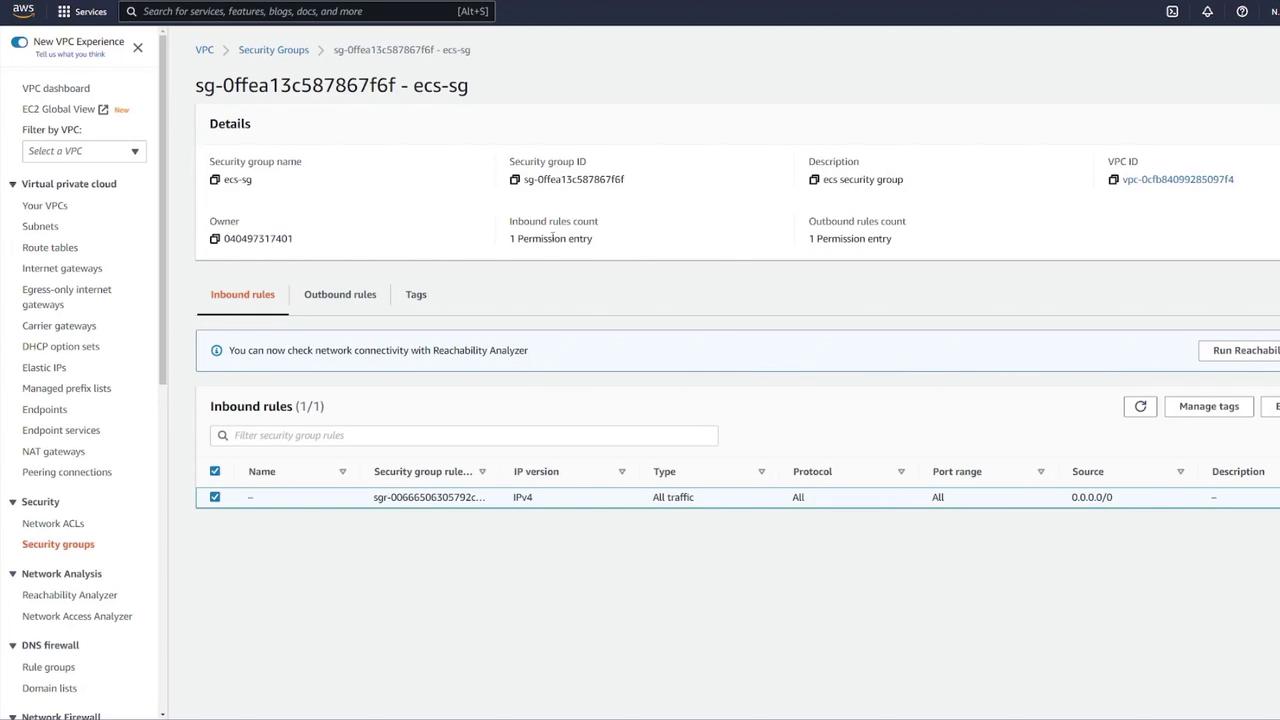
After updating the security group, test the API through the ALB DNS name to ensure that only traffic from the ALB is accepted.
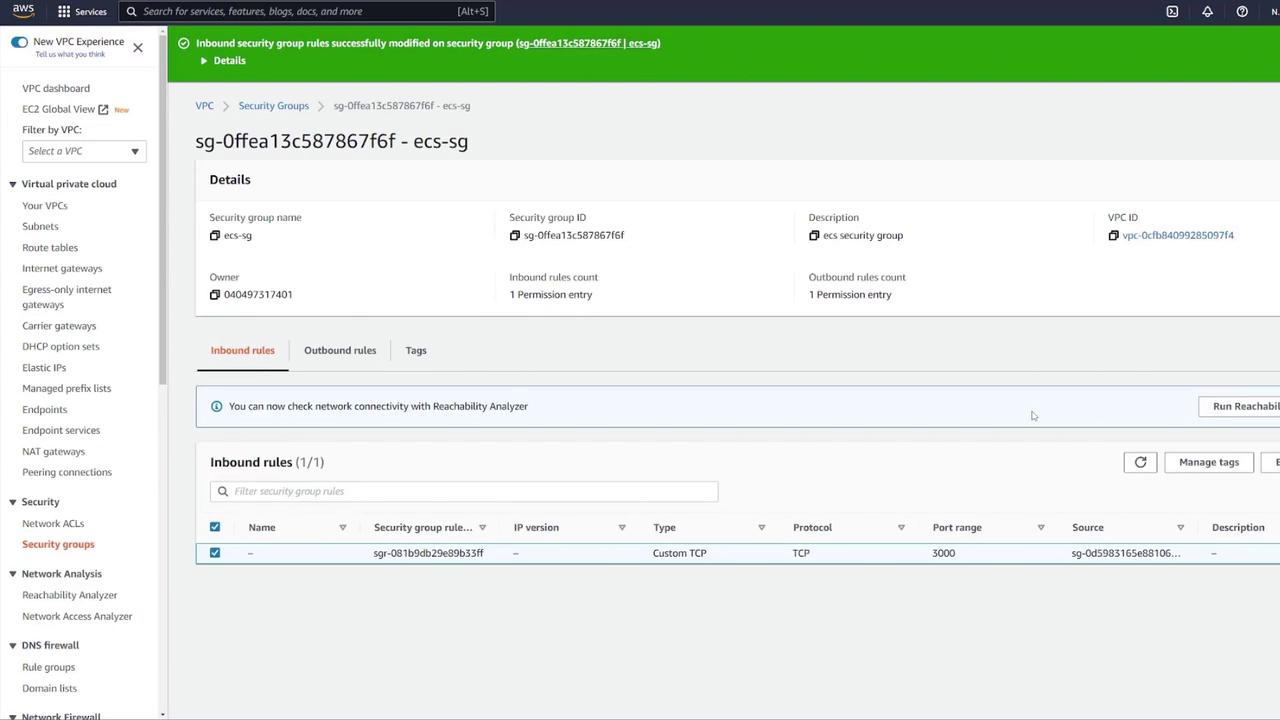
Warning
Securing your ECS security group is critical. Ensure that only the necessary traffic is allowed to minimize potential exposure and vulnerabilities.
By following these detailed steps, you have successfully deployed a containerized application on AWS ECS with a load balancer ensuring efficient traffic routing, along with security group modifications to secure your environment. For more information on container orchestration and best practices, visit Kubernetes Documentation and Docker Hub.
Watch Video
Watch video content